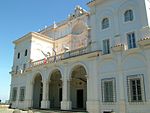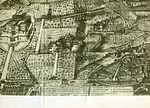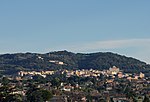Accademia Vivarium Novum

The Academy Vivarium Novum (or Accademia in Italian) in Rome is the only college in the world where students can spend one or more years immersed in Latin and Ancient Greek. These languages are spoken both in and outside of the classroom. The academy is directed by Luigi Miraglia, who according to the New Yorker magazine "speaks Latin more fluently than almost anyone else alive".The Academy Vivarium Novum was founded with the intent to preserve the tradition of Renaissance schools, their teaching methods, and the vision of the world that such an education fosters. It wants to induce a rebirth of the humanities based on the belief that dignity (dignitas hominis) may be attained only by continuous self-examination. The students of the Academy Vivarium Novum aim to achieve a comprehensive grasp of the Latin and Ancient Greek languages.The name Vivarium Novum recalls the proto-humanistic community of Cassiodorus, Theodoric's magister officiorum. Vivarium was a place where liberal arts and lofty aspiration coincided; at the same time it evokes the isle of Vivara located in the Bay of Naples, where the idea of a school prepared to offer an advanced education to future generations was first conceived.
Excerpt from the Wikipedia article Accademia Vivarium Novum (License: CC BY-SA 3.0, Authors, Images).Accademia Vivarium Novum
Viale Francesco Borromini,
Geographical coordinates (GPS) Address Nearby Places Show on map
Geographical coordinates (GPS)
| Latitude | Longitude |
|---|---|
| N 41.807083333333 ° | E 12.689138888889 ° |
Address
Villa Falconieri
Viale Francesco Borromini 5
00044
Lazio, Italy
Open on Google Maps










